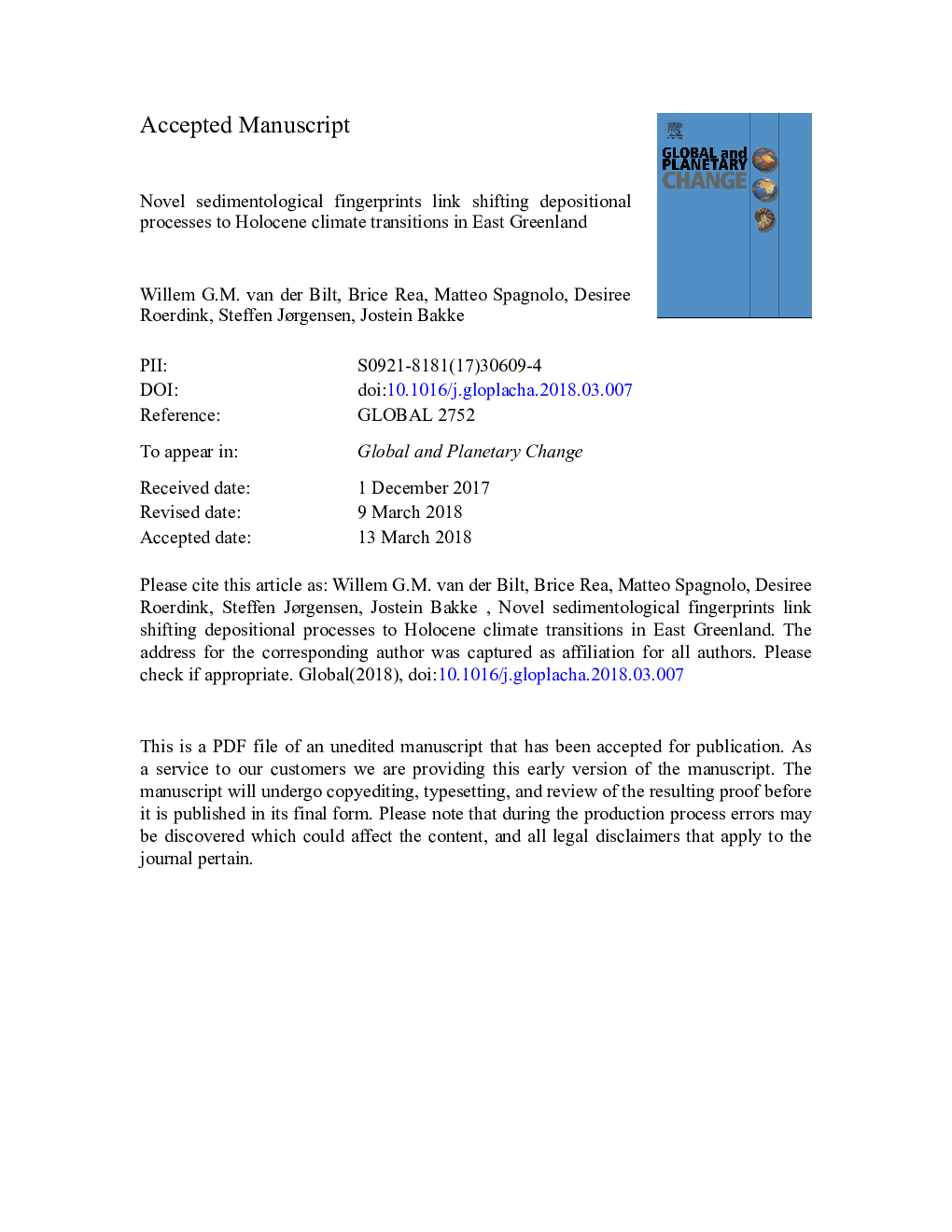| کد مقاله | کد نشریه | سال انتشار | مقاله انگلیسی | نسخه تمام متن |
|---|---|---|---|---|
| 8867522 | 1621618 | 2018 | 47 صفحه PDF | دانلود رایگان |
عنوان انگلیسی مقاله ISI
Novel sedimentological fingerprints link shifting depositional processes to Holocene climate transitions in East Greenland
ترجمه فارسی عنوان
اثر انگشت رسوبی نوین باعث تغییر فرآیندهای رسوبی به انتقال آب و هوای هولوسن در شرق گرینلند می شود
دانلود مقاله + سفارش ترجمه
دانلود مقاله ISI انگلیسی
رایگان برای ایرانیان
کلمات کلیدی
موضوعات مرتبط
مهندسی و علوم پایه
علوم زمین و سیارات
فرآیندهای سطح زمین
چکیده انگلیسی
The Arctic warms faster than any other region of our planet. Besides melting glaciers, thawing permafrost and decreasing sea-ice, this amplified response affects earth surface processes. This geomorphological expression of climate change may alter landscapes and increase the frequency and magnitude of geohazards like floods or mass-movements. Beyond the short span of sparse monitoring time series, geological archives provide a valuable long-term context for future risk assessment. Lake sediment sequences are particularly promising in this respect as continuous recorders of surface process change. Over the past decade, the emergence of new techniques that characterize depositional signatures in more detail has enhanced this potential. Here, we present a well-dated Holocene-length lake sediment sequence from Ammassalik Island on southeast Greenland. This area is particularly sensitive to regional shifts in the Arctic climate system due to its location near the sea-ice limit, the Greenland Ice Sheet and the convergence of polar and Atlantic waters. The expression of Holocene change is fingerprinted using physical (grain size, organic content, density), visual (3-D Computed Tomography) and geochemical (X-Ray Fluorescence, X-Ray Diffraction) evidence. We show that three sharp transitions characterize the Holocene evolution of Ymer Lake. Between 10 and 9.5â¯cal. ka BP, rapid local glacier loss from the lake catchment culminated in an outburst flood. Following a quiescent Holocene climatic optimum, Neoglacial cooling, lengthening lake ice cover and shifting wind patterns prompted in-lake avalanching of sediments from 4.2â¯cal. ka BP onwards. Finally, glaciers reformed in the catchment around 1.2â¯cal. ka BP. The timing of these shifts is consistent with the regional expression of deglaciation, Neoglacial cooling and Little Ice Age-type glacier growth, respectively. The novel multi-proxy approach applied in this study rigorously links depositional sediment signatures to surface processes and thereby provides a key step towards a process-based understanding of climate responses.
ناشر
Database: Elsevier - ScienceDirect (ساینس دایرکت)
Journal: Global and Planetary Change - Volume 164, May 2018, Pages 52-64
Journal: Global and Planetary Change - Volume 164, May 2018, Pages 52-64
نویسندگان
Willem G.M. van der Bilt, Brice Rea, Matteo Spagnolo, Desiree L. Roerdink, Steffen L. Jørgensen, Jostein Bakke,
